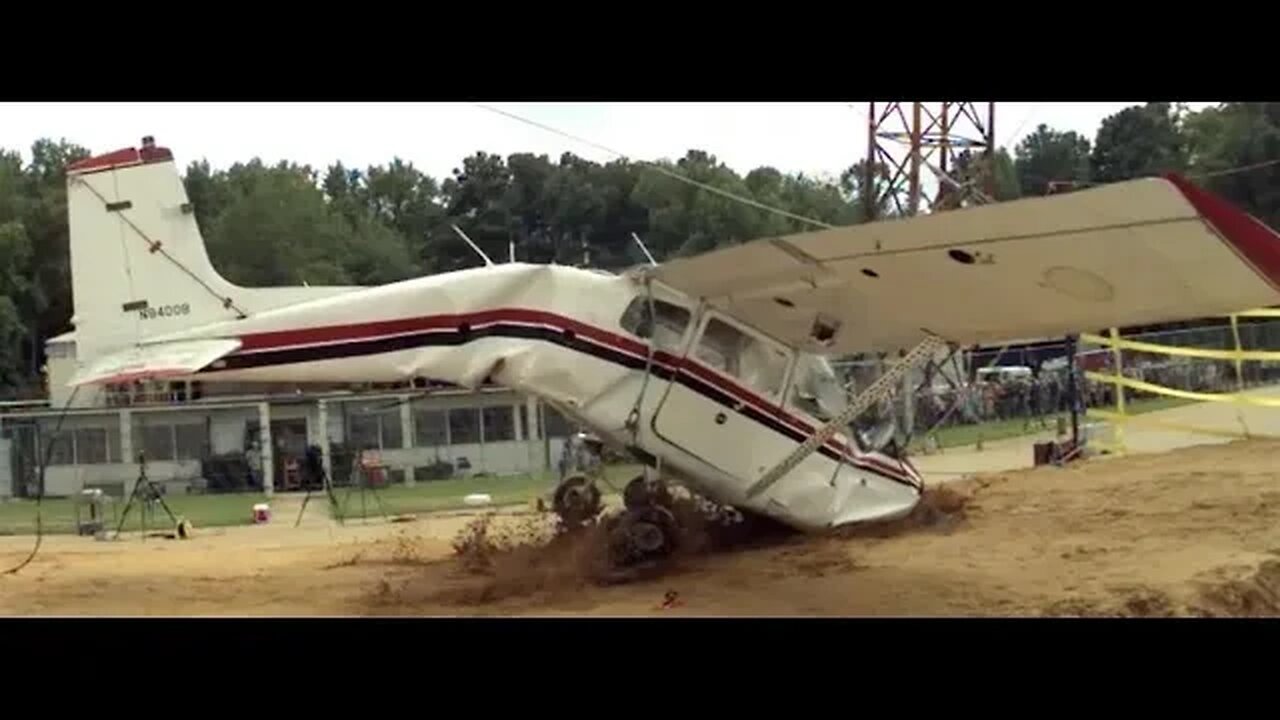Premium Only Content

The Dead Mans Turn.
#pilot #pilotslife #learntoflyinvr #airport #inverness #student @pickle4474
Disclaimer. This is a technique I have developed myself and should only be practiced in the simulator.
These videos are for public debate, satire and entertainment purposes. All material is found on the public domain and falls under the fair use and fair dealings guidelines. This is my subjective opinion based on the facts that I have been presented with. I advice you to do your own research and draw your own conclusions.
Engine failure on take-off (EFTO) is a situation, when flying an aircraft, where an engine has failed, or is not delivering sufficient power, at any time between brake release and the wheels leaving the ground / V2. The phases of flight are de-lineated to allow simplified standard procedures for different aircraft types to be developed. If an aircraft suffered engine failure on takeoff, the standard procedure for most aircraft would be to abort the takeoff.
In small airplanes, if the engine failure occurs before VR (Rotation Speed), the pilot should reduce throttles to idle, deploy speed brakes (if equipped), and brake as necessary. If the engine failure occurs just after liftoff, the pilot must make a decision if there is enough runway to achieve an emergency runway landing, or if an off field landing is required. One of the biggest mistakes a pilot can make is attempting to turn around and return to the airport for an emergency landing. If altitude permits, this could be an option (i.e. if at or above 1,000 feet AGL) but most pilots are trained to avoid the obvious tendency to turn around and instead land the plane straight forward.
Common first steps after an EFTO would be to fly at the best glide speed (VBG), retract flaps if airspeed permits, unlatch the door, and land straight ahead. Returning to the airport with a steep turn has a high probability of resulting in a stall or spin. Although it seems counterintuitive, the NTSB has recorded numerous fatal crashes due to this mistake.
In large airplanes e.g. commercial airliners, before the take-off is commenced, the highest speed from which a safe stop can be achieved on the remaining runway is calculated. This speed is called V1. If the pilot hasn't initiated a stop when accelerating through V1 during the take-off run, the take-off must be continued even in the event of an engine failure. The take-off weight will have been limited to ensure it is safe to continue take-off with one engine inoperative after having accelerated to V1 with all engines operating.
Join this channel to get access to perks:
https://www.youtube.com/channel/UCZYzeFLY7XPn88MDsePlDBw/join
#learntoflyinvr
-
 LIVE
LIVE
LFA TV
15 hours agoTRILLIONS IN FRAUD & WASTE FOUND! | LIVE FROM AMERICA 2.18.25 11AM
3,882 watching -
 LIVE
LIVE
Bannons War Room
17 hours agoWarRoom Live
21,168 watching -
 LIVE
LIVE
Wendy Bell Radio
6 hours agoCHECKMATE
11,460 watching -
 DVR
DVR
VSiNLive
1 hour agoA Numbers Game with Gill Alexander | Hour 1
1.77K -

Matt Kohrs
10 hours agoPumping To New Highs, Memecoin Mania & The Week Ahead || The MK Show
16.6K1 -
 42:05
42:05
BonginoReport
4 hours agoPothole Pete Blames Plane Crash in Canada on Trump (Ep.142) - 02/18/2025
64.2K150 -
 1:13:40
1:13:40
Graham Allen
3 hours agoDOGE Is Going After The IRS!! Mass Firing Soon!! + ANOTHER Plane Crash! We Are Not Safe…
35.5K17 -
 56:28
56:28
Randi Hipper
1 hour agoArgentina's Meme Coin Disaster: Inside the LIBRA Crash
2.93K1 -
 DVR
DVR
Chicks On The Right
5 hours agoCrazy plane crash, crazy lib protests, and Deborah Birx can suck it
38.7K5 -
 1:04:59
1:04:59
2 MIKES LIVE
2 hours agoTHE MIKE SCHWARTZ SHOW with DR. MICHAEL J SCHWARTZ 02-18-2025
4.19K3